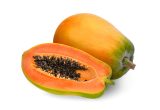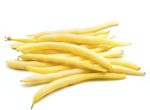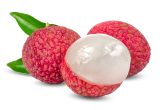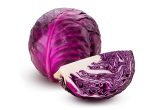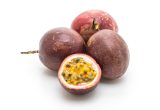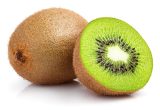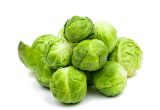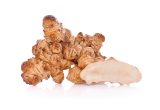Pumpkin

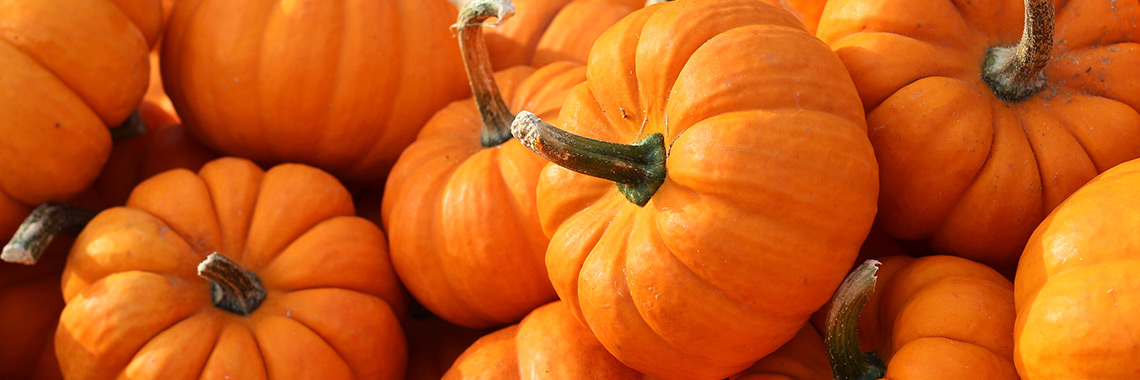
Description
- The pumpkin belongs to the Cucurbitaceae family, genus Cucurbita, species Cucurbita maxima.
- Pumpkin is native to the European and American continents (Nishimura, 2014), particularly the highlands of Central and South America (Kikuchi, 2014).
- Today, this fruit is grown all over the world (Kikuchi, 2014).
PHYSICAL AND ORGANOLEPTIC CHARACTERISTICS
- The Cucurbita maxima species generally produces fruits of 1 to 2 kg, while some varieties of this same species can reach a few hundred kilograms. It appears that certain factors such as ribulose-biphosphate carboxylase photosynthesis, glycolysis enzymes, and ATP synthase play a role (positive or negative) in pumpkin growth (Nakata, 2012).
- The orange colour of the pumpkin fruit is due to the presence of carotenoids. In the Cucurbita maxima species, the predominant carotenoids present are violaxanthin and lutein, which produce the orange-yellow colour of the ripe fruit (Nakkanong, 2012).
- Pumpkin is a firm fruit when raw, but its firmness decreases with cooking (in boiling water) (Monalisa, 2020). This change is probably due to the alteration of the microstructure of the vegetable (cell organisation), resulting in cell separation and water loss (Rinaldi, 2020).
- A study has revealed the presence of numerous volatile compounds responsible for the flavour of pumpkins, the most represented belonging to the alcohol, aldehyde and ketone families. The different compounds identified explain squash’s rather “green” flavour (Zhou, 2017).
COMPOSITION CHARACTERISTICS (excluding macronutrients, vitamins and minerals)
- Three organic acids have been identified in pumpkin: citric acid, malic acid and fumaric acid (Nawirska-Olszanska, 2014; Zhou, 2017). Their concentration varies considerably between cultivars and decreases during a storage period of 3 months (Nawirska-Olszanska, 2014).
- Pumpkin contains polyphenols and carotenoids that give it antioxidant activity. These compounds are sensitive to cooking in water (Monalisa, 2020).
RAW
The following values are approximate and depend on variety, season, ripeness, cultivation conditions, etc
In the Ciqual table, energy values are calculated from the contents of fat, protein, carbohydrates, dietary fibre, polyols, organic acids and ethanol, each with a specific energy value. Since (nom aliment) is a food in which the presence of polyols and/or organic acids is suspected, and Ciqual does not have compositional data to quantify them, no energy value has been calculated (using the Ciqual 2020 table).
COMPOSITION TABLES
For each nutrient, the tables provide information on the content, minimum and maximum values, as well as the percentage of the Dietary Reference Values (DRVs) for 100 g net of raw pumpkin (pulp, without skin).
* Regulation (EC) No 1924/2006 of the European Parliament and of the Council of 20 December 2006 on nutrition and health claims made on foods.
MACRONUTRIENTS
| Constituent (g) | Average content |
Min-Max per 100g |
DRV% |
|---|---|---|---|
| Water | 91,6 | - | - |
| Fibers | 0,50 | - | - |
| Carbohydrates | 3,50 | - | 1,35 |
| Sugars | 1,36 | - | 1,51 |
| Lipids | 0,10 | - | 0,14 |
| Saturated fat | 0,052 | - | 0,26 |
| Protein | 1 | - | 2 |
| Constituent (g) | Amount | Min-Max | DRV% |
|---|---|---|---|
| Water | Ciqual 2020 | - | - |
| Fibers | Ciqual 2020 | - | - |
| Carbohydrates | Ciqual 2020 | - | Règlement (UE) N°1169/2011 du parlement Européen, et du conseil du 25 octobre 2011 |
| Sugars | Ciqual 2020 | - | Règlement (UE) N°1169/2011 du parlement Européen, et du conseil du 25 octobre 2011 |
| Lipids | Ciqual 2020 | - | Règlement (UE) N°1169/2011 du parlement Européen, et du conseil du 25 octobre 2011 |
| Saturated fat | Ciqual 2020 | - | Règlement (UE) N°1169/2011 du parlement Européen, et du conseil du 25 octobre 2011 |
| Protein | Ciqual 2020 | - | Règlement (UE) N°1169/2011 du parlement Européen, et du conseil du 25 octobre 2011 |
Zoom on carbohydrates
- Raw pumpkin is low in sugar (100 g of raw pumpkin contains no more than 5 g of sugars)
- Raw pumpkin contains 3.50 g of carbohydrates per 100 g.
- This is lower than the average amount of carbohydrates in raw vegetables: about 4.45 g per 100 g.
Zoom on fibres
- Raw pumpkin contains a much lower amount of fibre (0.50 g per 100 g) than the average quantity found in raw vegetables (2.43 g per 100 g)..
Zoom on proteins
- The protein content (1 g per 100 g) is lower than the average amount found in raw vegetables (1.87 g per 100 g).
Zoom on lipids
- Raw pumpkin is fat-free* as it contains less than 0.5 g of fat per 100 g.
- The amount of fat in raw pumpkin (0.10 g per 100 g) is lower than the average quantity found in raw vegetables (0.56 g per 100 g).
MINERALS AND TRACE ELEMENTS
| Constituent | Average content |
Min-Max per 100g |
DRV% |
|---|---|---|---|
| Calcium (mg) | 21 | - | 2,63 |
| Chloride (mg) | - | - | - |
| Copper (mg) | 0,13 | - | 13 |
| Iron (mg) | 0,80 | - | 5,71 |
| Iodine (µg) | - | - | - |
| Magnesium (mg) | 12 | - | 3,20 |
| Manganese (mg) | 0,13 | - | 6,50 |
| Phosphorus (mg) | 44 | - | 6,29 |
| Potassium (mg) | 340 | - | 17 |
| Selenium (µg) | - | - | - |
| Sodium (mg) | 1 | - | - |
| Zinc (mg) | 0,32 | - | 3,20 |
| Constituent | Amount | Min-Max | DRV% |
|---|---|---|---|
| Calcium (mg) | Ciqual 2020 | - | Règlement (UE) N°1169/2011 du parlement Européen, et du conseil du 25 octobre 2011 |
| Chloride (mg) | Ciqual 2020 | - | Règlement (UE) N°1169/2011 du parlement Européen, et du conseil du 25 octobre 2011 |
| Copper (mg) | Ciqual 2020 | - | Règlement (UE) N°1169/2011 du parlement Européen, et du conseil du 25 octobre 2011 |
| Iron (mg) | Ciqual 2020 | - | Règlement (UE) N°1169/2011 du parlement Européen, et du conseil du 25 octobre 2011 |
| Iodine (µg) | Ciqual 2020 | - | Règlement (UE) N°1169/2011 du parlement Européen, et du conseil du 25 octobre 2011 |
| Magnesium (mg) | Ciqual 2020 | - | Règlement (UE) N°1169/2011 du parlement Européen, et du conseil du 25 octobre 2011 |
| Manganese (mg) | Ciqual 2020 | - | Règlement (UE) N°1169/2011 du parlement Européen, et du conseil du 25 octobre 2011 |
| Phosphorus (mg) | Ciqual 2020 | - | Règlement (UE) N°1169/2011 du parlement Européen, et du conseil du 25 octobre 2011 |
| Potassium (mg) | Ciqual 2020 | - | Règlement (UE) N°1169/2011 du parlement Européen, et du conseil du 25 octobre 2011 |
| Selenium (µg) | Ciqual 2020 | - | Règlement (UE) N°1169/2011 du parlement Européen, et du conseil du 25 octobre 2011 |
| Sodium (mg) | Ciqual 2020 | - | - |
| Zinc (mg) | Ciqual 2020 | - | Règlement (UE) N°1169/2011 du parlement Européen, et du conseil du 25 octobre 2011 |
Zoom on minerals and trace elements
- Raw pumpkin is a source of potassium as it provides the equivalent of 17% of DRVs, i.e. 340 mg per 100 g.
- It contains a significant amount of copper (0.13 mg per 100 g), equivalent to 13% of DRVs.
- The other minerals and trace elements account for less than 7% of DRVs.
VITAMINS
| Constituent | Average content |
Min-Max per 100g |
DRV% |
|---|---|---|---|
| Provitamin A Beta-carotene (µg) | 3 100 | - | - |
| Vitamin A equivalent (µg) | 516,67 | - | 64,58 |
| Vitamin B1 (mg) | 0,05 | - | 4,55 |
| Vitamin B2 (mg) | 0,11 | - | 7,86 |
| Vitamin B3 (mg) | 0,60 | - | 3,75 |
| Vitamin B5 (mg) | 0,30 | - | 5 |
| Vitamin B6 (mg) | 0,061 | - | 4,36 |
| Vitamin B9 (µg) | 16 | - | 8 |
| Vitamin C (mg) | 9 | - | 11,25 |
| Vitamin E (mg) | 1,06 | - | 8,83 |
| Vitamin K1 (µg) | 1,10 | - | 1,47 |
| Constituent | Amount | Min-Max | DRV% |
|---|---|---|---|
| Provitamin A Beta-carotene (µg) | Ciqual 2020 | - | - |
| Vitamin A equivalent (µg) | Calcul à partir de la valeur Provitamine A Béta-carotène* | - | Règlement (UE) N°1169/2011 du parlement Européen, et du conseil du 25 octobre 2011 |
| Vitamin B1 (mg) | Ciqual 2020 | - | Règlement (UE) N°1169/2011 du parlement Européen, et du conseil du 25 octobre 2011 |
| Vitamin B2 (mg) | Ciqual 2020 | - | Règlement (UE) N°1169/2011 du parlement Européen, et du conseil du 25 octobre 2011 |
| Vitamin B3 (mg) | Ciqual 2020 | - | Règlement (UE) N°1169/2011 du parlement Européen, et du conseil du 25 octobre 2011 |
| Vitamin B5 (mg) | Ciqual 2020 | - | Règlement (UE) N°1169/2011 du parlement Européen, et du conseil du 25 octobre 2011 |
| Vitamin B6 (mg) | Ciqual 2020 | - | Règlement (UE) N°1169/2011 du parlement Européen, et du conseil du 25 octobre 2011 |
| Vitamin B9 (µg) | Ciqual 2020 | - | Règlement (UE) N°1169/2011 du parlement Européen, et du conseil du 25 octobre 2011 |
| Vitamin C (mg) | Ciqual 2020 | - | Règlement (UE) N°1169/2011 du parlement Européen, et du conseil du 25 octobre 2011 |
| Vitamin E (mg) | Ciqual 2020 | - | Règlement (UE) N°1169/2011 du parlement Européen, et du conseil du 25 octobre 2011 |
| Vitamin K1 (µg) | Ciqual 2020 | - | Règlement (UE) N°1169/2011 du parlement Européen, et du conseil du 25 octobre 2011 |
Zoom on vitamins
- Raw pumpkin is high in vitamin A as it provides the equivalent of 64.58% of DRVs, i.e. 516.67 µg per 100 g.
- It also provides a significant amount of vitamin C: 9 mg per 100 g, equivalent to 11.25% of DRVs.
- Raw pumpkin provides the equivalent of:
- 8.83% of DRVs for vitamin E, i.e. 1.06 mg per 100 g;
- 8% of DRVs for vitamin B9, i.e. 16 µg per 100 g.
- The other vitamins account for less than 8% of DRVs.
POLYPHENOLS
Zoom on polyphenols
- Polyphenols are substances with an antioxidant effect.
- Flavones, a subgroup of flavonoids, are present in the majority of raw pumpkin composites, representing 93.66% of the total polyphenols identified.
- The remaining polyphenols are represented by lignans.
ROASTED
The following values are approximate and depend on variety, season, ripeness, cultivation conditions, etc. Roasted pumpkin is low in energy*. On average, it provides 30.20 kcal per 100 g, i.e. 127 kJ.
COMPOSITION TABLES
For each nutrient, the tables provide information on the content, minimum and maximum values, as well as the percentage of the Dietary Reference Values (DRVs) for 100 g net of roasted pumpkin.
* Regulation (EC) No 1924/2006 of the European Parliament and of the Council of 20 December 2006 on nutrition and health claims made on foods.
MACRONUTRIENTS
| Constituent (g) | Average content |
Min-Max per 100g |
DRV% |
|---|---|---|---|
| Water | 90,70 | - | - |
| Fibers | 2 | - | - |
| Carbohydrates | 5,66 | - | 2,18 |
| Sugars | 4,80 | - | 5,33 |
| Lipids | < 0,30 | - | - |
| Saturated fat | < 0,01 | - | - |
| Protein | < 0,50 | - | - |
| Constituent (g) | Amount | Min-Max | DRV% |
|---|---|---|---|
| Water | Ciqual 2020 (valeur issue des analyses Ciqual-Aprifel 2018) | - | - |
| Fibers | Ciqual 2020 (valeur issue des analyses Ciqual-Aprifel 2018) | - | - |
| Carbohydrates | Ciqual 2020 | - | Règlement (UE) N°1169/2011 du parlement Européen, et du conseil du 25 octobre 2011 |
| Sugars | Ciqual 2020 (valeur issue des analyses Ciqual-Aprifel 2018) | - | Règlement (UE) N°1169/2011 du parlement Européen, et du conseil du 25 octobre 2011 |
| Lipids | Ciqual 2020 (valeur issue des analyses Ciqual-Aprifel 2018) | - | Règlement (UE) N°1169/2011 du parlement Européen, et du conseil du 25 octobre 2011 |
| Saturated fat | Ciqual 2020 (valeur issue des analyses Ciqual-Aprifel 2018) | - | Règlement (UE) N°1169/2011 du parlement Européen, et du conseil du 25 octobre 2011 |
| Protein | Ciqual 2020 (valeur issue des analyses Ciqual-Aprifel 2018) | - | Règlement (UE) N°1169/2011 du parlement Européen, et du conseil du 25 octobre 2011 |
Zoom on carbohydrates
- Roasted pumpkin contains 5.66 g of carbohydrates per 100 g.
- This is higher than the average amount of carbohydrates in cooked vegetables: about 4.85 g per 100 g.
- These include sucrose (2.20 g per 100 g), fructose (1.40 g per 100 g) and glucose (1.20 g per 100 g).
Zoom on fibres
- Roasted pumpkin contains 2 g of fibre per 100 g..
- This is equal to the average amount found in cooked vegetables.
Zoom on lipids
- Roasted pumpkin is fat-free* as it contains less than 0.5 g of fat per 100 g.
MINERALS AND TRACE ELEMENTS
| Constituent | Average content |
Min-Max per 100g |
DRV% |
|---|---|---|---|
| Calcium (mg) | 31 | - | 3,88 |
| Chloride (mg) | 45,35 | - | 5,67 |
| Copper (mg) | 0,05 | - | 5 |
| Iron (mg) | 0,11 | - | 0,79 |
| Iodine (µg) | < 20 | - | - |
| Magnesium (mg) | 8,60 | - | 2,29 |
| Manganese (mg) | 0,02 | - | 1 |
| Phosphorus (mg) | 14 | - | 2 |
| Potassium (mg) | 330 | - | 16,50 |
| Selenium (µg) | < 20 | - | - |
| Sodium (mg) | < 5 | - | - |
| Zinc (mg) | 0,10 | - | 1 |
| Constituent | Amount | Min-Max | DRV% |
|---|---|---|---|
| Calcium (mg) | Ciqual 2020 (valeur issue des analyses Ciqual-Aprifel 2018) | - | Règlement (UE) N°1169/2011 du parlement Européen, et du conseil du 25 octobre 2011 |
| Chloride (mg) | Ciqual 2020 (valeur issue des analyses Ciqual-Aprifel 2018) | - | Règlement (UE) N°1169/2011 du parlement Européen, et du conseil du 25 octobre 2011 |
| Copper (mg) | Ciqual 2020 (valeur issue des analyses Ciqual-Aprifel 2018) | - | Règlement (UE) N°1169/2011 du parlement Européen, et du conseil du 25 octobre 2011 |
| Iron (mg) | Ciqual 2020 (valeur issue des analyses Ciqual-Aprifel 2018) | - | Règlement (UE) N°1169/2011 du parlement Européen, et du conseil du 25 octobre 2011 |
| Iodine (µg) | Ciqual 2020 (valeur issue des analyses Ciqual-Aprifel 2018) | - | Règlement (UE) N°1169/2011 du parlement Européen, et du conseil du 25 octobre 2011 |
| Magnesium (mg) | Ciqual 2020 (valeur issue des analyses Ciqual-Aprifel 2018) | - | Règlement (UE) N°1169/2011 du parlement Européen, et du conseil du 25 octobre 2011 |
| Manganese (mg) | Ciqual 2020 (valeur issue des analyses Ciqual-Aprifel 2018) | - | Règlement (UE) N°1169/2011 du parlement Européen, et du conseil du 25 octobre 2011 |
| Phosphorus (mg) | Ciqual 2020 (valeur issue des analyses Ciqual-Aprifel 2018) | - | Règlement (UE) N°1169/2011 du parlement Européen, et du conseil du 25 octobre 2011 |
| Potassium (mg) | Ciqual 2020 (valeur issue des analyses Ciqual-Aprifel 2018) | - | Règlement (UE) N°1169/2011 du parlement Européen, et du conseil du 25 octobre 2011 |
| Selenium (µg) | Ciqual 2020 (valeur issue des analyses Ciqual-Aprifel 2018) | - | Règlement (UE) N°1169/2011 du parlement Européen, et du conseil du 25 octobre 2011 |
| Sodium (mg) | Ciqual 2020 (valeur issue des analyses Ciqual-Aprifel 2018) | - | - |
| Zinc (mg) | Ciqual 2020 (valeur issue des analyses Ciqual-Aprifel 2018) | - | Règlement (UE) N°1169/2011 du parlement Européen, et du conseil du 25 octobre 2011 |
Zoom on minerals and trace elements
- Roasted pumpkin is a source of potassium as it provides the equivalent of 16.50% of DRVs, i.e. 330 mg per 100 g.
- The other minerals and trace elements account for less than 6% of DRVs.
VITAMINS
| Constituent | Average content |
Min-Max per 100g |
DRV% |
|---|---|---|---|
| Provitamin A Beta-carotene (µg) | 5 860 | - | - |
| Vitamin A equivalent (µg) | 976,67 | - | 122,08 |
| Vitamin B1 (mg) | < 0,015 | - | - |
| Vitamin B2 (mg) | < 0,01 | - | - |
| Vitamin B3 (mg) | 0,56 | - | 3,50 |
| Vitamin B5 (mg) | 0,40 | - | 6,67 |
| Vitamin B6 (mg) | 0,02 | - | 1,43 |
| Vitamin B9 (µg) | 10 | - | 5 |
| Vitamin C (mg) | < 0,50 | - | - |
| Vitamin E (mg) | 0,50 | - | 4,17 |
| Vitamin K1 (µg) | < 0,80 | - | - |
| Constituent | Amount | Min-Max | DRV% |
|---|---|---|---|
| Provitamin A Beta-carotene (µg) | Ciqual 2020 (valeur issue des analyses Ciqual-Aprifel 2018) | - | - |
| Vitamin A equivalent (µg) | Calcul à partir de la valeur Provitamine A Béta-carotène* | - | Règlement (UE) N°1169/2011 du parlement Européen, et du conseil du 25 octobre 2011 |
| Vitamin B1 (mg) | Ciqual 2020 (valeur issue des analyses Ciqual-Aprifel 2018) | - | Règlement (UE) N°1169/2011 du parlement Européen, et du conseil du 25 octobre 2011 |
| Vitamin B2 (mg) | Ciqual 2020 (valeur issue des analyses Ciqual-Aprifel 2018) | - | Règlement (UE) N°1169/2011 du parlement Européen, et du conseil du 25 octobre 2011 |
| Vitamin B3 (mg) | Ciqual 2020 (valeur issue des analyses Ciqual-Aprifel 2018) | - | Règlement (UE) N°1169/2011 du parlement Européen, et du conseil du 25 octobre 2011 |
| Vitamin B5 (mg) | Ciqual 2020 (valeur issue des analyses Ciqual-Aprifel 2018) | - | Règlement (UE) N°1169/2011 du parlement Européen, et du conseil du 25 octobre 2011 |
| Vitamin B6 (mg) | Ciqual 2020 (valeur issue des analyses Ciqual-Aprifel 2018) | - | Règlement (UE) N°1169/2011 du parlement Européen, et du conseil du 25 octobre 2011 |
| Vitamin B9 (µg) | Ciqual 2020 (valeur issue des analyses Ciqual-Aprifel 2018) | - | Règlement (UE) N°1169/2011 du parlement Européen, et du conseil du 25 octobre 2011 |
| Vitamin C (mg) | Ciqual 2020 (valeur issue des analyses Ciqual-Aprifel 2018) | - | Règlement (UE) N°1169/2011 du parlement Européen, et du conseil du 25 octobre 2011 |
| Vitamin E (mg) | Ciqual 2020 (valeur issue des analyses Ciqual-Aprifel 2018) | - | Règlement (UE) N°1169/2011 du parlement Européen, et du conseil du 25 octobre 2011 |
| Vitamin K1 (µg) | Ciqual 2020 (valeur issue des analyses Ciqual-Aprifel 2018) | - | Règlement (UE) N°1169/2011 du parlement Européen, et du conseil du 25 octobre 2011 |
Zoom on vitamins
- Roasted pumpkin is high in vitamin A as it provides the equivalent of 122.08% of DRVs, i.e. 976.67 µg per 100 g.
- According to the Ciqual 2020 table, roasted pumpkin is the vegetable with the 4th highest vitamin A content, after carrots (raw and cooked), cooked red peppers and cooked spinach.
- The other vitamins account for less than 7% of DRVs.
POLYPHENOLS
Nutrition and health claims
According to the definitions of nutrition claims as set out in Regulation (EC) No 1924/2006 on nutrition and health claims, and in view of the composition of raw pumpkin, the following claims may be used:
NUTRITION CLAIMS RAW PUMPKIN
- Fat-free (100 g of raw pumpkin do not contain more than 0.5 g of fat)
- Low in sugar (100 g of raw pumpkin contain less than 5 g of sugar)
- High in vitamin A (100 g of raw pumpkin provide more than 30% of DRVs)
- Source of potassium (100 g of raw pumpkin provide more than 15% of DRVs)
HEALTH CLAIMS (for a consumption of 100 g of raw pumpkin)
-
Vitamin A
- Vitamin A contributes to:
- maintenance of normal skin,
- maintenance of normal mucous membranes,
- maintenance of normal vision,
- normal iron metabolism,
- normal function of the immune system.
-
Potassium
- Potassium contributes to:
- normal functioning of the nervous system,
- normal muscle function,
- maintenance of normal blood pressure
- Potassium contributes to:
Nutrition and health claims
According to the definitions of nutrition claims as set out in Regulation (EC) No 1924/2006 on nutrition and health claims, and in view of the composition of boiled pumpkin, the following claims may be used:
NUTRITION CLAIMS OF BOILED PUMPKIN
- Low in energy (100 g of roasted pumpkin provide less than 40 kcal)
- High in vitamin A (100 g of roasted pumpkin provide more than 30% of DRVs)
- Source of potassium (100 g of roasted pumpkin provide more than 15% of DRVs)
HEALTH CLAIMS (for a consumption of 100 g of boiled pumpkin)
Vitamin A
- Vitamin A has a role in the process of cell specialisation.
- Vitamin A contributes to:
- maintenance of normal skin,
- maintenance of normal mucous membranes,
- maintenance of normal vision,
- normal iron metabolism,
- normal function of the immune system.
Potassium
- Potassium contributes to:
- normal functioning of the nervous system,
- normal muscle function,
- maintenance of normal blood pressure.
References
- Agence nationale de sécurité sanitaire de l’alimentation, de l’environnement et du travail. Table de composition nutritionnelle des aliments Ciqual 2020. Consultée le 10/09/2020 depuis le site internet Ciqual https://ciqual.anses.fr/
- Kikuchi T, Ueda S, Kanazawa J, Naoe H, Yamada T, Tanaka R. Three new triterpene esters from pumpkin (Cucurbita maxima) seeds. Molecules. 2014 ;19(4):4802-13.
- Monalisa, K., Bhuiyan, J., Islam, M., Sayem, A. Boiling-induced changes on physicochemical, bioactive compounds, color, and texture properties of pumpkin (Cucurbita maxima). Food Science and Technology International, 2020;26(4):333-43
- Nakata Y, Taniguchi G, Takazaki S, Oda-Ueda N, Miyahara K, Ohshima Y. Comparative analysis of cells and proteins of pumpkin plants for the control of fruit size. J Biosci Bioeng. 2012 ;114(3):334-41.
- Nakkanong K, Yang JH, Zhang MF. Carotenoid accumulation and carotenogenic gene expression during fruit development in novel interspecific inbred squash lines and their parents. J Agric Food Chem. 2012 ;60(23):5936-44.
- Nawirska-Olszańska A, Biesiada A, Sokół-Łętowska A, Kucharska AZ. Characteristics of organic acids in the fruit of different pumpkin species. Food Chem. 2014 ;148:415-9.
- Nishimura M, Ohkawara T, Sato H, Takeda H, Nishihira J. Pumpkin Seed Oil Extracted From Cucurbita maxima Improves Urinary Disorder in Human Overactive Bladder. J Tradit Complement Med. 2014 ;4(1):72-4.
- Neveu V, Perez-Jiménez J, Vos F, Crespy V, du Chaffaut L, Mennen L, Knox C, Eisner R, Cruz J, Wishart D, Scalbert A. (2010) Phenol-Explorer: an online comprehensive database on polyphenol contents in foods. Database, doi: 10.1093/database/bap024. Full text (free access)
- Règlement (CE) N° 1924/2006 du Parlement européen et du Conseil du 20 décembre 2006 concernant les allégations nutritionnelles et de santé portant sur les denrées alimentaires.
- Règlement (UE) N°432/2012 de la Commission du 16 mai 2012 établissant une liste des allégations de santé autorisées portant sur les denrées alimentaires, autres que celles faisant référence à la réduction du risque de maladie ainsi qu’au développement et à la santé infantiles.
- Règlement (UE) n°1169/2011 du Parlement européen et du Conseil du 25 octobre 2011 concernant l’information des consommateurs sur les denrées alimentaires, modifiant les règlements (CE) n°1924/2006 et (CE) n°1925/2006 du Parlement européen et de Conseil et abrogeant la directive 87/250/CEE de la Commission, la directive 90/496/CEE du Conseil, la directive 1999/10/CE de la Commission, la directive 200/13/CE du Parlement européen et du Conseil, les directives 2002/67/CE et 2008/5/CE de la Commission et le règlement (CE) n°608/2004 de la Commission.
- Rinaldi M, Santi S, Paciulli M, Ganino T, Pellegrini N, Visconti A, Vitaglione P, Barbanti D, Chiavaro E. Comparison of physical, microstructural and antioxidative properties of pumpkin cubes cooked by conventional, vacuum cooking and sous vide methods. J Sci Food Agric. 2020;15.
- Zhou CL, Mi L, Hu XY, Zhu BH. Evaluation of three pumpkin species: correlation with physicochemical, antioxidant properties and classification using SPME-GC-MS and E-nose methods. J Food Sci Technol. 2017;54(10):3118-31
